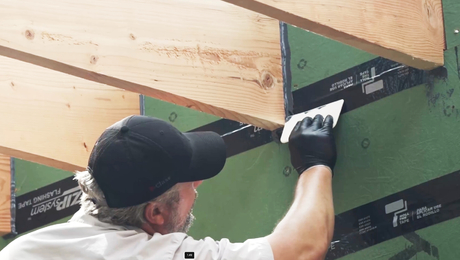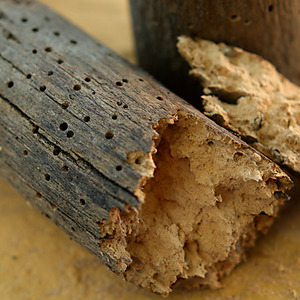i have just finished the infloor heating program
my houses first floor is 1000 sq feet and 100 sq feet of that is cantilevered
part of the floor is concrete the other half gyptcrete
the crawl space is insulated with R-25 non faced bats with a reflective foil between the bats and the floor.. the 2 foot concrete wall are not insulated and has vents that are open temps in the 40’s are not uncommin and can get colder
the cantilever has R -25 non faced fiberglass and a plastic vapor barrier than is sheeted with osb
im worried about heat/cold condensation
i lived in a tent on a table for a year and there was alot on condensation between my bodys hotspots and the tent floor even with the layers of foam and padding
should i condition the crawl space even though there is no heat source
thanks for any input and i hope i made this situation clear


















Replies
I don't think you have a reason to worry about condensation.
But
I would insulate the crawl walls.
And
the venting there is going to be variable according to your location, climate, and time of year.
For instance, in my climate, it is OK to vent a crawl in spring and fall, but not winter because it gets so frigid, and not in summer because warm humid air flowing into a cool crawl space will condense tons of water there.
Welcome to the
Taunton University of Knowledge FHB Campus at Breaktime.
where ...
Excellence is its own reward!
Ringshank,
Condensation occurs when moisture (often held in warm air) contacts a cold surface.
Examples include moist summer air entering crawlspace vents, leading to condensation on cold crawlspace surfaces. That's why experts recommend sealed, unvented crawlspaces.
Your cantilever description sounds worrisome. On which side of the assembly did you put a layer of poly? I would avoid using poly in a cantilevered floor assembly.
You chose a type of insulation (fiberglass batts) with a poor reputation. You will need to do an impeccable job of air sealing, especially in your cantilever, to make up for the fact that fiberglass batts are porous to air movement.
good morning Martin.The poly made my ears quiver too for a minute.I would be leery of that in a normal heating situation, but with the radiant heat in the floor, I tend to doubt that space will ever get cool enough to allow condensation in the bays there.
Welcome to the Taunton University of Knowledge FHB Campus at Breaktime. where ... Excellence is its own reward!
the poly was placed on the underside of the battsbatts are what i had put in because i was told for the money they are just fine..i did however caulk all the seems in the osb with the big streach. i just remember how impossible it was to stop the condinsation in my tentlayers of poly , sill seal . foam, and tarps would not do the trickbut maybe it was because the upper end of the tent breathed so welli guess i should be asking these questions before I F it upthanks again
tj
Ringshank,
It sounds like you are in a heating climate, although you don't say where.You put the poly on the wrong side of the floor assembly. Not a great idea. Considering the radiant heat tubing, you'll probably be okay. But you should have researched the issue before you started building.In a tent, you can't stop condensation by adding more layers of plastic. The source of the moisture causing the condensation in a tent is you — your sweat and exhaled breath. Unless you zip yourself into a plastic body bag, you're going to give off moisture. The only solutions are (a) thick insulation, or (b) ventilation with dry outdoor air.
>>the poly was placed on the underside of the battsWrong place - just pull it down and let it cover the (dirt?) floor
"Ask not what the world needs. Ask what makes you come alive... then go do it. Because what the world needs is people who have come alive."
Howard Thurmanhttp://rjw-progressive.blogspot.com/
the climate is the north oregon coast..this is the cantilever im talking about ]the crawl space has plactic on the sandy ground floor... and a reflective surface has been placed between the floor and the insulation..the inspector really wants to see the crawl space vented..the tent was made from a mesh with a rain fly 2-3 inches surrounding that...it would breath very wellwhere heat and cold meet you get water no matter what right?
where heat and cold meet you get water no matter what right?
Depends on the RH of the warm air and the temperature of the cold surface.
"just pull it down and let it cover the (dirt?) floor"bob, this is the cantilevered floor we be talking about with poly
Welcome to the Taunton University of Knowledge FHB Campus at Breaktime. where ... Excellence is its own reward!
The thing that saves floor assemblies is the stack effect--warm air rises and leaks out of the top and places floors under negative pressure. That and the fact that floor finishes are usually pretty effective air barriers. I think that most moisture problems in crawlspaces come from a source other than inside the house as Martin alluded to.